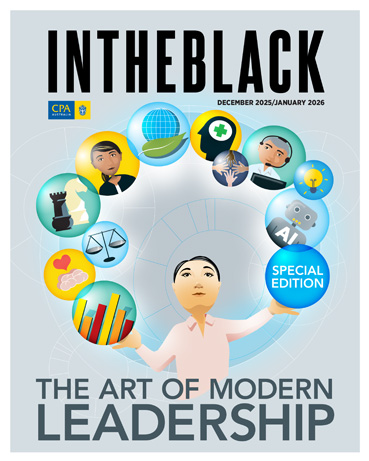Loading component...
At a glance
Uncertainty prevails for the world of work in 2025, regardless of whether the perspective is macro or micro.
Tightening economic conditions, geopolitical tensions and a trade war are in the big picture, while other stressors like wind-backs to working from home (WFH) and approaches to diversity, equity and inclusion (DEI) are in the headlines.
Opportunities and challenges present in the rise of artificial intelligence (AI) and automation, with advances in technology spurring calls for higher performance and productivity.
In these conditions, a sharp focus on employee experience (EX) is essential. These four insights can help strengthen trust, increase wellbeing and foster workplace and community connection.
1. Always action employee feedback
A key to finding out what is really on employees’ minds is simply to ask them — a process that commonly takes the form of an engagement survey.
Success, however, is not just in the final engagement score. It is what happens post-survey that really counts.
Culture Amp, the employee experience company that runs engagement surveys for over 6000 organisations worldwide, has reams of insight on the importance of businesses to act on employee feedback.
Responsive employers rate around three times better on engagement scores over time, compared to organisations that do nothing with the data they collect, advises Dr Kristina Dorniak-Wall, Culture Amp’s lead people scientist.
“Employees need to know they are heard, and how their input will be actioned,” she says.
The price of inaction is high.
“Companies with poor survey-to-action experience see an average 10–15 per cent decline in engagement metrics within 12–18 months,” Dorniak-Wall reports. Innovation metrics drop 40 per cent, while voluntary turnover rates double “and psychological safety scores dip 25 per cent for companies that repeatedly fail to act, eroding trust in the employer-employee relationship”.
2. Get AI to check for employee stress
Tracking employee wellbeing on an hourly basis is challenging, but generative AI (Gen AI) tools now offer stress-busting interventions in real time, allowing managers to see when teams are at risk of burning out.
Tech company Pioneera uses natural language processing and machine learning to generate “conversational intelligence” and support staff. Its chatbot, Indie, monitors written communications from Slack or Microsoft emails to detect when workers’ emotions are escalating and keeps watch for psychosocial hazards.
“Indie’s about lifting people’s mental wellbeing to deliver positive productivity rather than toxic productivity, which comes from driving people to do more,” explains CEO Danielle Owen Whitford, who launched Pioneera in 2018.
The result? She provides an example of potential wins: when a company reversed its return-to-office policy after discovering employees’ concerns, they made a 30 per cent saving on office space.
3. Create an inclusive culture
While DEI policies have appeared in headlines lately for being put “on hold” in some parts of the world, many organisations are strengthening their commitment to ensure people thrive at work, notes Catherine Hunter, CEO of Diversity Council Australia.
Advanced economies like Australia operate in a strong DEI landscape with anti-discrimination laws, gender pay gap reporting, and Work Health and Safety regulations, she points out.
“Inclusive workplaces benefit everyone by creating safer, more respectful environments that reduce discrimination and harassment and promote higher employee engagement, stronger retention and better mental health outcomes across the board.”
Plus, investors, regulators and communities are looking to make meaningful social impact, as a driver of long-term sustainability and trust.
"Inclusive workplaces benefit everyone by creating safer, more respectful environments that reduce discrimination and harassment and promote higher employee engagement, stronger retention and better mental health outcomes across the board."
If negativity to DEI arises in the workplace, organisations can demonstrate commitment by listening and addressing concerns openly, and communicating clearly about why inclusion is important, Hunter advises.
“Above all, see resistance as an opportunity to reinforce why diversity matters.”
4. Pay employees to volunteer
Paying employees to use their skills as volunteers at not-for-profits, charities, community organisations and events is a canny strategy to foster engagement.
The positives are numerous — from confidence to boosting morale to feel-good moments, upskilling opportunities, developing leadership and teamwork.
Global tech behemoth Atlassian gives employees up to 40 hours paid volunteer leave annually. Since June 2024, 3252 employees have volunteered through the Atlassian Foundation, contributing over 26,000 hours in total.
“When employees feel they are part of something bigger, they develop a stronger connection to their workplace,” reports Dr Mahreen Khan, senior researcher in people insights and Dr Khue Tran, senior people data scientist at Atlassian.
Atlassian’s annual May It Forward campaign highlights the organisations social impact and offers volunteering opportunities to employees. Employers can learn how it works in their guide to running an employee volunteering campaign.

